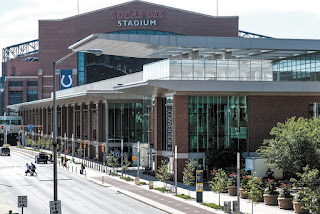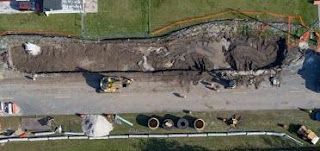Thoughts on Abraj Al-Bait
Sunday, 25 July 2021
Thoughts on Abraj Al-Bait
Sunday, 18 July 2021
Thoughts on New York
Thoughts on New York
Sunday, 27 June 2021
Thoughts on Paris
Thoughts on Paris
Sunday, 20 June 2021
Impact of COVID-19 Pandemic on US Infrastructure- Part 6
The COVID-19 pandemic has changed the world and society in countless number of ways. Fundamentally, people have realized that we all live in a highly interconnected, globalized world where even a small incident has a ripple effect around the globe. Though it is difficult to look at a silver lining from this, there can be lessons learnt from the pandemic which can be applied for the near future. These two years (2020-21) have presented a crucial moment for the future of American infrastructure. In a way, this is a chance for DOTs, planning boards and other civil engineering organizations to implement comprehensive systematic change, examine the deficiencies of the existing infrastructure and look for ways on how to update it.
“Infrastructure investment decisions made now will affect how we respond to challenges such as climate change, building inclusive societies, and delivering strong, sustainable, and balanced growth. This note raises issues for consideration, in support of infrastructure investment through building longer-term resilience to future shocks, risks, and threats, and aligning investment with infrastructure that can be robust but also innovative and adaptable to changing circumstances and complexities” (OECD).
Sunday, 25 April 2021
Facebook Rapid Deployment Data Centre
Facebook Rapid Deployment Data Centre
Tuesday, 20 April 2021
Indiana Convention Center expansion
As said before, this blog covers infrastructure projects of every kind, Sometimes, they can even be private, commercial projects which can serve the public community. The Indiana Convention Center is a good example of a centre which has brought in tourists from other states while serving as a congregating point for the locals. But, now the time has come for its expansion.
“The Indianapolis City-County Council will seek support for up to $155 million in bonds for an expansion project related to the Indiana Convention Center…the expansion plan calls for construction of a 50,000-square-foot ballroom across the street from the current convention center. A walkway will be built to connect the new facility to the convention center. Construction will include 93,500 square feet of space for meeting rooms and other uses. City leaders plan for the project to be completed by 2024” (Americaninfrastructuremag).
While there might be questions asked on whether such a project is needed in these COVID-19 times, the leadership might be appreciated for taking such a bold move. This is seen as an investment for the future.
Sunday, 11 April 2021
Kissimmee Accelerated Gravity Sewer Assessment and Rehabilitation Project
Kissimmee Accelerated Gravity Sewer Assessment and Rehabilitation Project
Sunday, 28 March 2021
Impact of COVID-19 Pandemic on US Infrastructure- Part 5
It has been just over a year since the COVID-19 pandemic hit American shores in every way possible. Just like other industries, US infrastructure also has been damaged as covered by previous articles in this blog. It goes without saying that there would be deficits in revenue, major projects’ progress being halted or cancelled completely as well as struggles in approving budgets for new projects.
So what are some possible solutions for this? “DFIs can, for example, assist governments in diagnosing risks early to mitigate the virus’ impacts on project portfolios through expert support, training, and tools. Projects in pipeline should be re-reviewed often in this changing environment and projects under construction or in operation should be reexamined for any contractual remedies available to mitigate the effect of potential delay and funding needs. Where governments lack the expertise and resources to take this on, DFIs can step in to help” (Worldbank).
Sunday, 21 March 2021
Honolulu Rail Transit
Sunday, 14 March 2021
Essex Crossing
Friday, 26 February 2021
Sunday, 14 February 2021
Southwest Florida International Airport Expansion
Southwest Florida International Airport Expansion
















